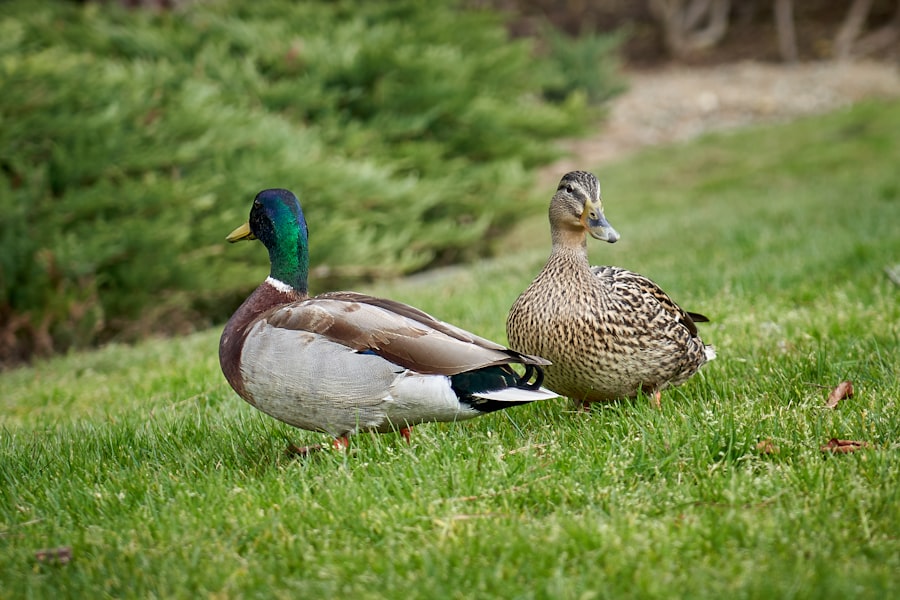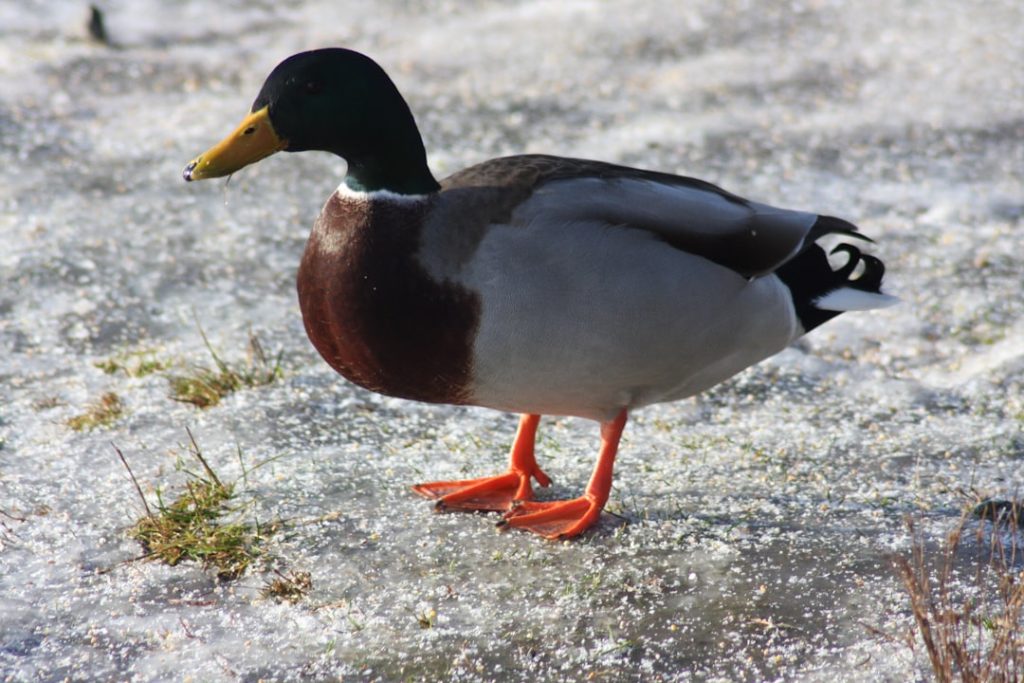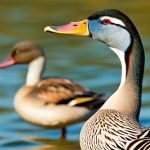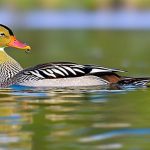The African wild dog, also known as the painted wolf or painted dog, is a medium-sized canid with a lean, muscular build. They have a distinctive coat pattern with patches of black, yellow, and white fur, giving them a unique and striking appearance. Their large rounded ears and long legs are well adapted for hunting in the open savannah. African wild dogs have a strong bite force and sharp teeth, which they use to tear apart their prey. They have a bushy tail with a white tip, which helps them communicate with each other while hunting or traveling in a pack. Their average weight ranges from 40 to 70 pounds, and they stand about 30 inches tall at the shoulder.
African wild dogs have a highly specialized dentition, with fewer teeth than other canids, which is an adaptation for their carnivorous diet. Their long legs and lean body allow them to cover long distances while hunting, and their large ears help them dissipate heat in the hot African climate. Their coat pattern serves as camouflage in the grasslands and woodlands where they hunt, helping them blend in with their surroundings. Overall, the physical characteristics of the African wild dog make them well-suited for their unique hunting and social behaviors in the wild.
Table of Contents
- 1 Behavior and Temperament
- 2 Habitat and Range
- 3 Breeding and Reproduction
- 4 Feeding and Diet
- 5 Conservation Status
- 6 Differences in Domestication
- 7 FAQs
- 7.1 What are the main differences between Rouen ducks and Mallard ducks?
- 7.2 Which duck is better for meat production, Rouen or Mallard?
- 7.3 Are there any differences in temperament between Rouen and Mallard ducks?
- 7.4 Do Rouen and Mallard ducks have different egg-laying capabilities?
- 7.5 Which duck breed is more commonly found in domestic settings, Rouen or Mallard?
Key Takeaways
- The red panda is a small mammal with a bear-like body and a long, bushy tail.
- Red pandas are solitary animals and are most active during the early morning and late afternoon.
- They are found in the temperate forests of the Himalayas and are known to inhabit bamboo thickets.
- Red pandas breed once a year and give birth to 1-4 cubs after a gestation period of about 4 months.
- Their diet mainly consists of bamboo, but they also eat fruits, acorns, and insects.
Behavior and Temperament
African wild dogs are highly social animals, living in packs of up to 30 individuals. They have a complex social structure with a dominant breeding pair that leads the pack and other subordinate members that help with hunting and caring for the young. They are known for their cooperative hunting behavior, where they work together to chase down and capture prey. This cooperative hunting strategy allows them to take down larger prey than they could on their own, making them highly efficient predators.
In addition to their cooperative hunting behavior, African wild dogs are also known for their strong bonds within the pack. They are highly vocal animals, using a variety of vocalizations to communicate with each other while hunting or traveling. They are also known for their elaborate greeting ceremonies, where pack members will greet each other with excited vocalizations and physical contact. These social behaviors help to strengthen the bonds within the pack and maintain a cohesive group dynamic. Overall, African wild dogs are highly social and cooperative animals, with complex behaviors and strong bonds within their pack.
Habitat and Range
African wild dogs are found in sub-Saharan Africa, primarily in savannahs, grasslands, and woodlands. They have a wide range across countries such as Botswana, Zimbabwe, Namibia, and South Africa. They prefer open habitats with minimal human disturbance, where they can roam freely and hunt for their prey. African wild dogs are highly adaptable and can thrive in a variety of habitats, from arid deserts to dense forests. However, they are most commonly found in areas with abundant prey and minimal competition from other predators.
Their wide range across sub-Saharan Africa reflects their adaptability to different habitats and their ability to thrive in diverse ecosystems. However, their populations have been declining due to habitat loss and fragmentation, as well as human-wildlife conflict. Conservation efforts are crucial to protect the remaining populations of African wild dogs and ensure their survival in the wild.
Breeding and Reproduction
African wild dogs have a unique breeding system, with only the dominant breeding pair in the pack reproducing. Breeding typically occurs once a year, with the alpha female giving birth to a litter of pups in an underground den. The entire pack participates in caring for the young, with subordinate members regurgitating food for the mother and pups and providing protection for the den site. This cooperative breeding system helps to ensure the survival of the pups and strengthens the bonds within the pack.
The alpha female gives birth to a litter of 10-12 pups on average, which are born blind and helpless. The pups are cared for by the entire pack until they are old enough to join in on hunts and fend for themselves. This cooperative breeding and care system is crucial for the survival of African wild dog populations, as it ensures that the young have the best chance of survival in the challenging African wilderness.
Feeding and Diet
African wild dogs are specialized hunters, primarily preying on medium-sized ungulates such as impalas, gazelles, and wildebeest. They are highly efficient hunters, using their speed and endurance to chase down their prey over long distances. Their cooperative hunting behavior allows them to take down larger prey than they could on their own, making them successful predators in the African savannah.
Their carnivorous diet consists mainly of meat from their prey, which they tear apart using their strong bite force and sharp teeth. They are also known to scavenge from other predators or feed on smaller prey such as rodents or birds when larger prey is scarce. African wild dogs are skilled hunters and play a crucial role in maintaining the balance of prey populations in their ecosystems.
Conservation Status

African wild dogs are listed as endangered by the International Union for Conservation of Nature (IUCN), with only an estimated 6,000 individuals remaining in the wild. Their populations have declined due to habitat loss, human-wildlife conflict, and disease transmission from domestic dogs. Conservation efforts are crucial to protect the remaining populations of African wild dogs and ensure their survival in the wild.
Conservation organizations are working to establish protected areas for African wild dogs, as well as implementing measures to reduce human-wildlife conflict and prevent disease transmission from domestic dogs. These efforts are crucial for the long-term survival of African wild dogs in the wild and for maintaining healthy ecosystems in sub-Saharan Africa.
Differences in Domestication
African wild dogs have not been domesticated like their close relatives, domestic dogs (Canis lupus familiaris). While domestic dogs have been selectively bred over thousands of years for various traits such as companionship, hunting, or guarding, African wild dogs have remained wild animals with their natural behaviors intact.
Domestic dogs have been bred for specific traits such as size, coat color, and temperament, resulting in hundreds of different breeds with diverse characteristics. In contrast, African wild dogs have not undergone selective breeding by humans and retain their natural physical and behavioral traits.
Overall, African wild dogs are fascinating animals with unique physical characteristics, complex social behaviors, and specialized hunting strategies. Their conservation is crucial for maintaining healthy ecosystems in sub-Saharan Africa and ensuring the survival of this iconic species in the wild.
If you’re interested in learning more about different duck breeds, you might want to check out an article comparing Rouen ducks and Mallards on PoultryWizard.com. This article provides valuable insights into the characteristics and differences between these two popular duck breeds. And if you’re also considering raising chickens, PoultryWizard.com offers helpful resources such as tips for building a farmhouse chicken coop and ideas for creating a chicken coop country diner. Whether you’re interested in ducks, chickens, or even guinea fowl, PoultryWizard.com has a wealth of information to help you make informed decisions for your poultry endeavors.
FAQs
What are the main differences between Rouen ducks and Mallard ducks?
Rouen ducks are larger and heavier than Mallard ducks, with a more upright stance and a fuller, rounder body. Their coloring is also different, with Rouen ducks having a darker, more uniform plumage compared to the Mallard’s more mottled appearance.
Which duck is better for meat production, Rouen or Mallard?
Rouen ducks are generally preferred for meat production due to their larger size and plumpness. They are often raised specifically for their meat, while Mallard ducks are more commonly kept for ornamental or hobby purposes.
Are there any differences in temperament between Rouen and Mallard ducks?
Rouen ducks are known for being calmer and more docile compared to Mallard ducks, which tend to be more active and independent. This makes Rouen ducks easier to handle and more suitable for domestic settings.
Do Rouen and Mallard ducks have different egg-laying capabilities?
Rouen ducks are not as prolific egg layers as Mallard ducks. While both breeds are capable of laying eggs, Mallard ducks are known for their higher egg production, making them a better choice for those interested in egg production.
Which duck breed is more commonly found in domestic settings, Rouen or Mallard?
Mallard ducks are more commonly found in domestic settings, often kept for their ornamental value or for hobby purposes. Rouen ducks, while also kept domestically, are more often raised for meat production due to their larger size.
Meet Walter, the feathered-friend fanatic of Florida! Nestled in the sunshine state, Walter struts through life with his feathered companions, clucking his way to happiness. With a coop that’s fancier than a five-star hotel, he’s the Don Juan of the chicken world. When he’s not teaching his hens to do the cha-cha, you’ll find him in a heated debate with his prized rooster, Sir Clucks-a-Lot. Walter’s poultry passion is no yolk; he’s the sunny-side-up guy you never knew you needed in your flock of friends!







